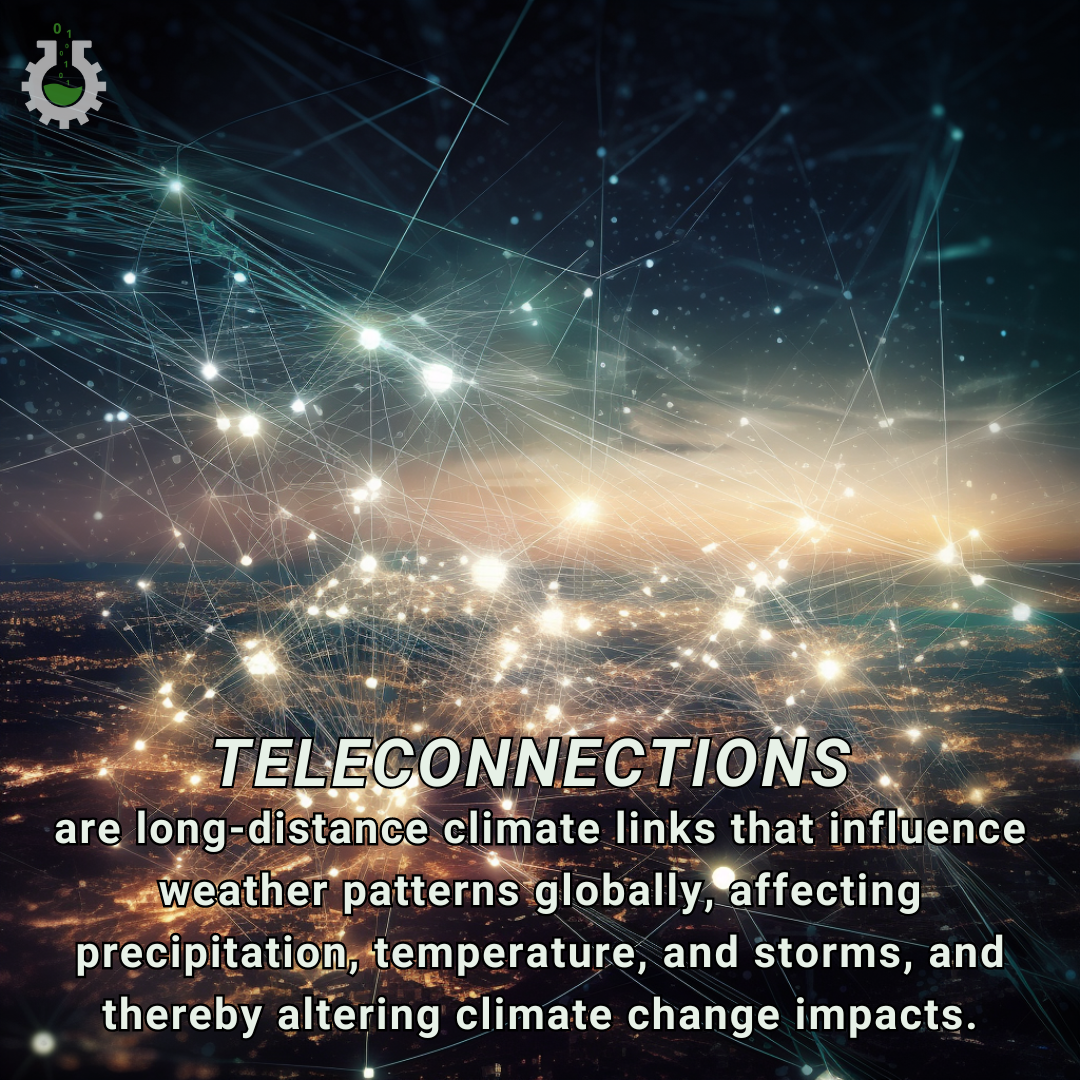July 22, 2024
Climate Change Poster Collection of the Day – Teleconnections
Book a Demo
Today’s Climate Change Poster Collection highlights Teleconnections, a large-scale patterns of climate variability that span vast geographic areas, linking weather and climate conditions in distant regions through atmospheric and oceanic processes. These connections, akin to invisible threads weaving through the fabric of our planet’s climate system, play a crucial role in shaping regional weather patterns and long-term climate trends. One of the most well-known examples of teleconnections is the El Niño-Southern Oscillation (ENSO), a periodic fluctuation in sea surface temperatures and atmospheric pressure over the equatorial Pacific Ocean. ENSO events can trigger a cascade of climatic effects, influencing rainfall patterns in South America, monsoon seasons in India, and even winter temperatures in North America.
As the climate changes, the behavior and intensity of these teleconnections are also being altered, leading to unpredictable and often extreme weather events. A warming planet may intensify the frequency and severity of El Niño and La Niña events, exacerbating droughts, floods, and hurricanes in various parts of the world. The ripple effects of these changes can be profound. During an El Niño event, warmer-than-average sea surface temperatures in the Pacific can lead to increased rainfall and flooding in the southern United States and Peru, while causing drought conditions in Australia and Indonesia. Conversely, La Niña, characterized by cooler-than-average sea surface temperatures, can result in opposite conditions, with drier weather in the southern U.S. and wetter conditions in Australia.
But ENSO is just one piece of the puzzle. Other significant teleconnections include the Arctic Oscillation (AO) and the North Atlantic Oscillation (NAO), which impact weather patterns across the Northern Hemisphere. The AO, for example, is a climate pattern characterized by winds circulating counterclockwise around the Arctic at around 55°N latitude. When the AO is in its positive phase, it tends to keep cold Arctic air contained, leading to milder winters in the mid-latitudes. In its negative phase, the AO allows cold air to spill southward, resulting in harsher winter conditions in North America and Europe. Similarly, the NAO influences weather patterns over the North Atlantic, affecting everything from European winters to North American storm tracks. A positive NAO phase is associated with stronger westerly winds and mild, wet winters in Northern Europe, while a negative phase can bring colder, drier conditions.
Understanding teleconnections is essential for improving climate models and predicting future climate scenarios, as these patterns offer critical insights into how distant regions are interconnected and how changes in one area can ripple across the globe. For example, researchers have found that teleconnections can influence the onset and intensity of monsoons, which are vital for agriculture and water resources in many parts of the world. Changes in teleconnection patterns can therefore have significant implications for food security and water availability.
Moreover, teleconnections can also impact the frequency and intensity of extreme weather events. For instance, studies have shown that the Pacific Decadal Oscillation (PDO), a long-term ocean fluctuation of the Pacific Ocean, can modulate the impacts of ENSO events. During a positive PDO phase, the impacts of El Niño can be amplified, leading to even more extreme weather conditions. Conversely, a negative PDO phase can dampen the effects of El Niño.
As we continue to grapple with the multifaceted challenges of climate change, recognizing and studying teleconnections will be vital in developing adaptive strategies and mitigating the adverse impacts on both local and global scales. Policymakers, scientists, and communities must work together to enhance our understanding of these complex climate interactions. This includes investing in climate research, improving climate models, and developing early warning systems that can help predict and prepare for the impacts of teleconnections. By doing so, we can build more resilient societies that are better equipped to navigate the uncertainties of a changing climate. Additionally, international cooperation and data sharing are essential, as teleconnections do not respect national borders and their impacts are felt worldwide. Only through a collaborative, informed approach can we hope to mitigate the far-reaching effects of climate change and teleconnections, ensuring a more stable and sustainable future for all.
Discover an inspiring collection of climate change poster.



